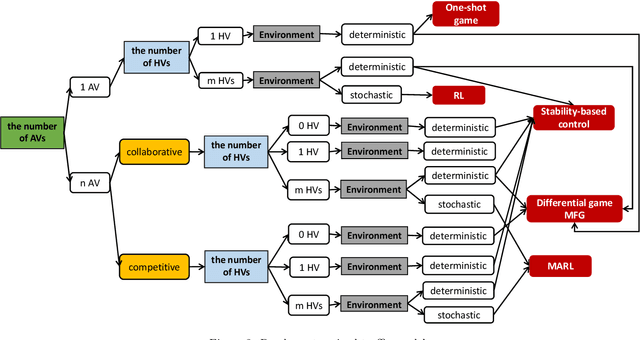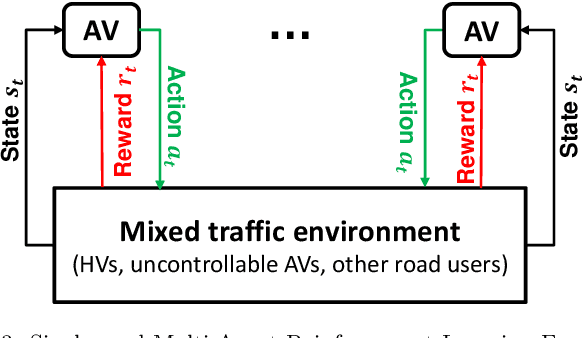A Survey on Autonomous Vehicle Control in the Era of Mixed-Autonomy: From Physics-Based to AI-Guided Driving Policy Learning
Paper and Code
Jul 10, 2020



This paper serves as an introduction and overview of the potentially useful models and methodologies from artificial intelligence (AI) into the field of transportation engineering for autonomous vehicle (AV) control in the era of mixed autonomy. We will discuss state-of-the-art applications of AI-guided methods, identify opportunities and obstacles, raise open questions, and help suggest the building blocks and areas where AI could play a role in mixed autonomy. We divide the stage of autonomous vehicle (AV) deployment into four phases: the pure HVs, the HV-dominated, the AVdominated, and the pure AVs. This paper is primarily focused on the latter three phases. It is the first-of-its-kind survey paper to comprehensively review literature in both transportation engineering and AI for mixed traffic modeling. Models used for each phase are summarized, encompassing game theory, deep (reinforcement) learning, and imitation learning. While reviewing the methodologies, we primarily focus on the following research questions: (1) What scalable driving policies are to control a large number of AVs in mixed traffic comprised of human drivers and uncontrollable AVs? (2) How do we estimate human driver behaviors? (3) How should the driving behavior of uncontrollable AVs be modeled in the environment? (4) How are the interactions between human drivers and autonomous vehicles characterized? Hopefully this paper will not only inspire our transportation community to rethink the conventional models that are developed in the data-shortage era, but also reach out to other disciplines, in particular robotics and machine learning, to join forces towards creating a safe and efficient mixed traffic ecosystem.
 Add to Chrome
Add to Chrome Add to Firefox
Add to Firefox Add to Edge
Add to Edge